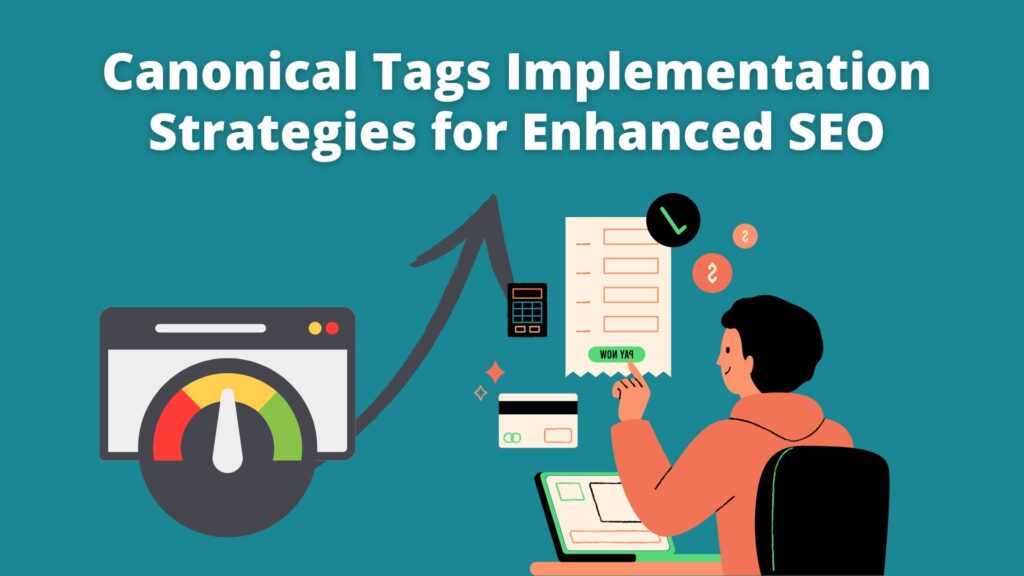In the intricate realm of SEO optimization, the implementation of canonical tags stands as a pivotal strategy to streamline content indexing and enhance website performance. These tags play a crucial role in guiding search engines toward the preferred version of a web page, minimizing duplicate content issues, and consolidating ranking signals effectively.
Understanding Canonical Tags
Defining Canonical Tags
Tags are HTML elements that signal search engines about the preferred version of a web page when multiple versions with similar content exist. They help consolidate ranking signals to the desired URL, mitigating the risk of duplicate content penalties.
Importance in SEO
Canonical tags serve as a potent tool in the SEO arsenal. By steering search engines towards the preferred URL version, they ensure that the selected content ranks higher, avoiding dilution of ranking signals across multiple pages.
Best Practices for Canonical Tags Implementation
1. Identifying Canonical URLs
Precisely identifying the canonical URL is fundamental. Analyze content variations and select the URL that represents the primary and most authoritative version of the content.
2. Correct Tag Placement
Place the canonical tag within the HTML header section of the preferred URL. Ensure accurate syntax and adherence to HTML guidelines to guarantee proper recognition by search engine crawlers.
3. Consistent Implementation
Consistency is key. Employ uniform canonical tag implementation across all relevant pages. This uniformity avoids confusion and strengthens the signaling of the preferred URL.
4. Handling Dynamic Parameters
Effectively manage dynamic parameters in URLs by utilizing canonical tags. Specify the canonical version to consolidate indexing signals and prevent the fragmentation of ranking authority.
5. Self-Referencing
Employ self-referencing canonical-tags on pages with a single version to reinforce the preferred URL. This practice solidifies the signaling of the authoritative URL to search engines.
6. Handling Alternate Mobile Versions
For websites with separate mobile versions, use rel=”alternate” and rel=”canonical” tags coherently. Direct search engines to the mobile equivalent URL while maintaining canonical association with the desktop version.

7. Monitoring and Regular Audits
Regularly monitor canonical tag implementations using tools like Google Search Console. Conduct audits to ensure tags are correctly applied, especially after site migrations or content updates.
8. Canonical Tags for Syndicated Content
In cases of syndicated content, specify canonical-tags to the source. This practice prevents duplicate content penalties and ensures proper attribution to the originating site.
9. Handling Parameterized URLs
Handle parameterized URLs effectively by using the rel=”canonical” tag to consolidate indexing signals. Specify the canonical version to avoid search engines treating parameter variations as separate content.
10. Avoiding Canonical Chains and Loops
Prevent canonicalization chains or loops. Avoid situations where one canonical URL points to another, creating a loop that confuses search engine crawlers and impacts indexing.
11. Implementing Canonicalization for eCommerce Platforms
For eCommerce sites with multiple product versions (e.g., color or size variations), ensure accurate canonical to consolidate ranking signals to the main product page.
12. Canonical Tags for Similar Content
For pages with similar but not identical content, use canonical-tags judiciously. Direct search engines to the most relevant and preferred version to avoid content dilution.
13. Canonical in Sitemaps
Include canonical URLs in XML sitemaps to reinforce the preferred version. This assists search engines in understanding the primary URLs and strengthens their indexing.
14. Robust Handling of HTTP Status Codes
Ensure appropriate HTTP status codes (e.g., 301 redirects) when implementing canonical tags for redirected or non-indexable pages. This reinforces the signaling of the preferred URL.
Implementing these additional best practices ensures a comprehensive and robust approach to canonical-tags implementation. By meticulously adhering to these guidelines, websites can fortify their SEO strategies and maintain a well-structured digital presence.
Optimizing SEO with Canonical
1. Consolidating Page Authority
Canonical tags consolidate ranking signals, channeling the accumulated authority of duplicate content versions toward the preferred URL. This consolidation strengthens the selected URL’s SEO performance.

2. Mitigating Duplicate Content Issues
By guiding search engines to the canonical URL, duplicate content concerns are mitigated. This prevents content dilution and ensures that the desired version receives adequate visibility and ranking recognition.
3. Enhancing User Experience
Streamlining content through canonical tags ensures a cohesive user experience. Visitors are directed to the preferred version, reducing confusion and presenting unified information.
Advanced Canonical Tag Strategies
1. Cross-Domain Canonicalization
Implementing canonical across multiple domains or subdomains aids in consolidating authority and preventing content duplication across different web properties.
2. Pagination and Canonical Tags
For paginated content, utilizing rel=”next” and rel=”prev” tags in conjunction with tags aids search engines in understanding content sequences while consolidating ranking signals.
3. International SEO with Canonical Tags
In multilingual or multinational setups, canonical tags guide search engines to the appropriate regional or language-specific versions, optimizing international SEO efforts.
Final Thoughts:
In conclusion, implementing canonical tags for SEO is a strategic maneuver to consolidate ranking signals, mitigate duplicate content issues, and amplify the preferred version’s authority. Adhering to best practices in identifying, placing, and maintaining these tags ensures an optimized SEO structure.
By leveraging canonical tags effectively, websites can enhance their SEO performance, streamline content indexing, and reinforce their online visibility in the competitive digital landscape.


